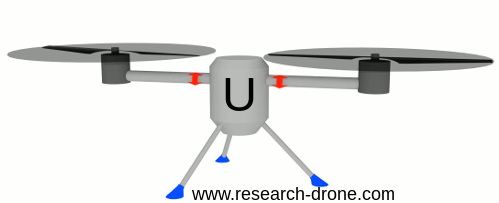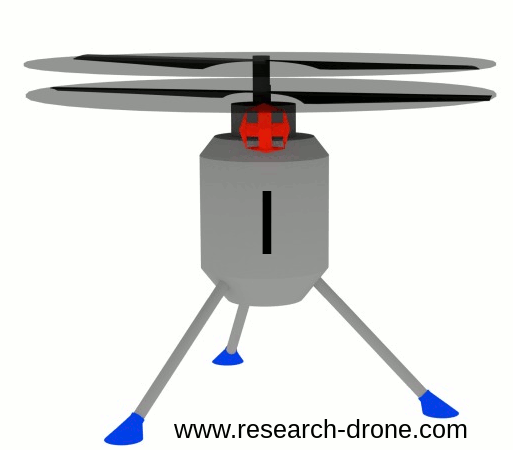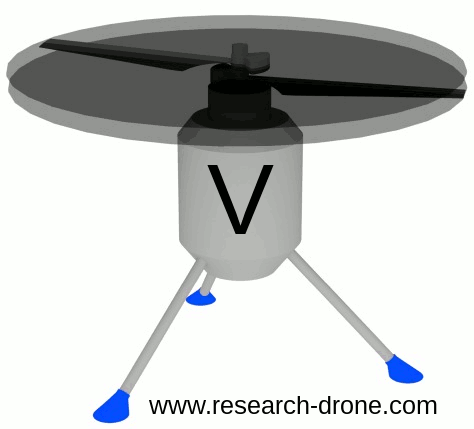Definition of DuoCopter, Bicopter, Dualcopter
There are different names for an aircraft or drone with two propellers."Ducopter", "Bicopter" and "Dualcopter" have their origins in the Latin and mean "two", "twice" and "two containing". Only "Duocopter" is used below.
The construction of a duocopter
There are different basic constructions with different advantages and disadvantages. The configurations are denoted by letters. The basic structures may each have further variants.One engine left, one right. Both arms can be swiveled

Photo: Dirk Brunner; Lizenz: CC BY SA 3.0
In this design the motors including the propellers are each mounted on a rotating arm. Due to the low center of gravity combined with the additional control of the propeller speed this ducopter is fully controllable. The structure looks like a "U" from the front. This configuration is therefore referred to as "U-configuration".
Advantages Duocopter U-configuration
- All components available
Disadvantages of Ducopter U-configuration
- Unbalanced effect of thrust (the Duocopter responds differently to disturbances in or across the arm direction)
- Both propellers next to each other require more space
- Arms are located in the airflow, thereby reducing efficiency
- Additional mechanics compared to "V-configuration"
- Additional components compared to the "V configuration"
Both motors one above the other. At least one motor can be swiveled in both directions

Photo: Dirk Brunner; Lizenz: CC BY SA 3.0
With this design the motors and propellers are mounted one above the other. At least one motor can be swiveled about two axes. Due to the additional control of the propeller speed this ducopter is fully controllable. The structure looks like an "I" from the front. This configuration is therefore referred to as "I configuration".
Advantages Ducopter I configuration
- All components available
- Symmetrical thrust
- Compact design
- Free airflow
Disadvantages of Duocopter I configuration
- Additional mechanics compared to "V-configuration"
- Additional components compared to the "V configuration"
One bladed propeller

Photo: Dirk Brunner; Lizenz: CC BY SA 3.0
With this design the motors incl. Propellers are mounted one above the other. At least one engine has a single-blade propeller and can change it very quickly in the rotation speed per revolution. This Duocopter is fully controllable. The propeller control of the single-blade propeller is referred to as a vector propeller. This configuration is therefore referred to as "V-configuration".
Advantages Duocopter V configuration
- Symmetrical thrust
- No mechanics
- Compact design
- Free airflow
Disadvantages of Duocopter V configuration
- Increased load on the motor, motor controller and battery compared to the "I" and "U" configuration
- Components not available in series
Quadcopter (by comparison)
With this design four motors including a propeller are arranged in a quadrangular arrangement. This corresponds to the construction of a classic quadrocopter. The quadcopter is fully controllable.Advantages quadcopter
- Symmetrical thrust
- All components available
Disadvantages quadcopter
- Arms are located in the airflow, thereby reducing efficiency.
- Propellers next to each other require more space
- Additional mechanics compared to "V-configuration"
- Additional components compared to the "V configuration"
If you have a duocopter yourself, you can send photos including text for publication.
Contact me.
